Dartmoor Wildlife
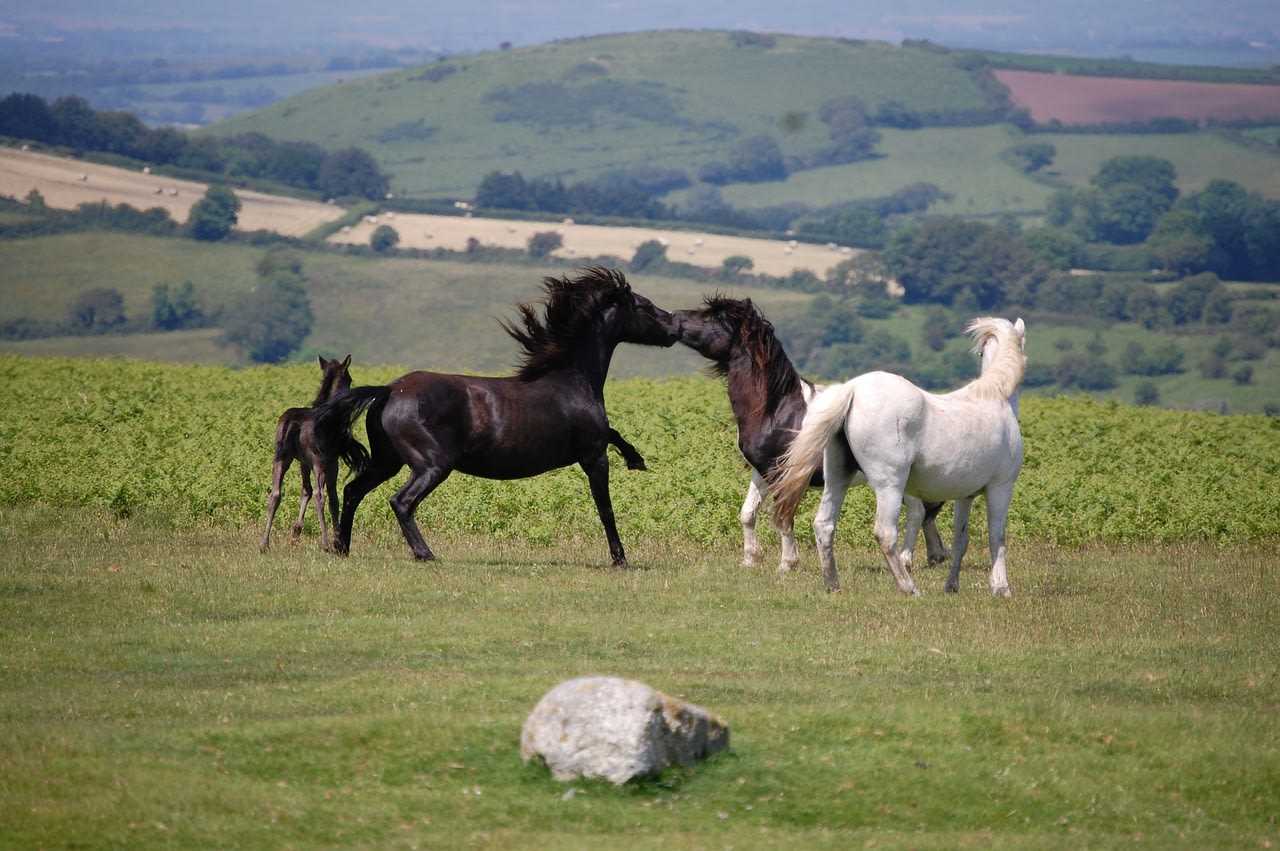
Thanks to the diversity of its habitats, Dartmoor National Park is home to many rare or endangered plant and animal species. Blanket bog sprawls over the high moorland, while broadleaved woodlands are tucked into sheltered, steep-sided valleys. And what lies between the two is a mix of open heath and grassland.
Dartmoor is also of national importance for its areas of waterlogged peat, invaluable for storing carbon and known as ‘mires’, which exist side by side with Rhôs pasture, a combination of boggy moor grass and reeds. Along with hay meadows and hedgebanks, these ecological systems are very rich in flora and fauna.
From the emblematic wild Dartmoor ponies to rare butterflies and spawning salmon, read on for Pitchup's guide to seeing the wildlife of Dartmoor National Park.
Wildlife on Dartmoor
Famous for its stark moorland and heath, rocky tors, sheep-grazed commons and ancient woodlands, Dartmoor is a safe sanctuary for a diverse wildlife from rare butterflies to ground-nesting birds and wild ponies, thought to have been indigenous to the area for more than 3,500 years. The park is also known for its endangered ‘Little Five’: blue ground beetles, ash black slugs, otters, cuckoos and marsh fritillary butterflies.
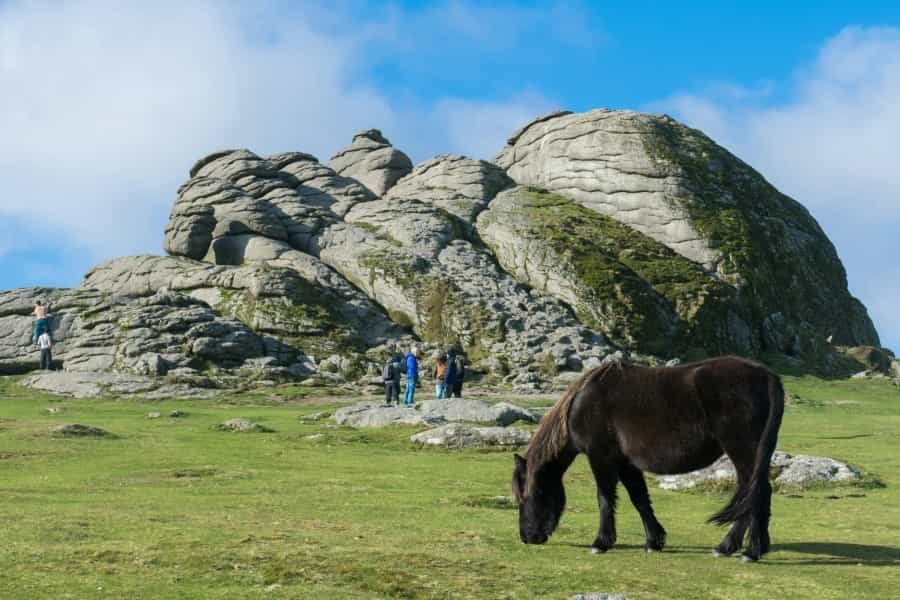
Birds
Ground-nesting birds on the upland moors include curlew, plovers, snipe and skylarks. The park is also known as a popular habitat for rarer species like cuckoos and ring ouzels, while meadow pipits, redstarts, wood warblers and stonechats can be observed in some numbers, particularly between April and July.
Birds of prey seen over the moorland include buzzards and harriers, while dippers and wagtails are often seen on the rivers and streams, as well as the rarer kingfisher.
Fish and amphibians
With around a dozen rivers, the national park supports Atlantic salmon and wild brown or sea trout – both species spawn in the upper reaches of its waters – along with palmate newts, frogs, toads and fairy shrimp, which thrive in small pools and tributaries.
Insects and reptiles
As well as blue ground beetles, endangered insects thriving on the moor include marsh and pearl-bordered fritillaries, damselflies, dragonflies and several species of hawk and pygmy moths.
The park also has a large population of adders, the UK’s only venomous snake; most active between March and October, they bask in patches of sunlight and tend to slide off into the undergrowth if they are disturbed.
Wet and marshy conditions attract ash black slugs; these are the world’s largest land slugs and can grow up to a foot/30cm in length.
Mammals
Farmed animals like sheep and cattle can be seen across the national park, along with more elusive red deer. Of course it’s also home to iconic Dartmoor ponies, standing no more than 12.2 hands high and grazing freely in herds across the moor.
However, the park is also an important habitat for rare otters breeding in the rivers, hazel dormice who love the scrubland and thick hedges, and vulnerable barbastelle bats.
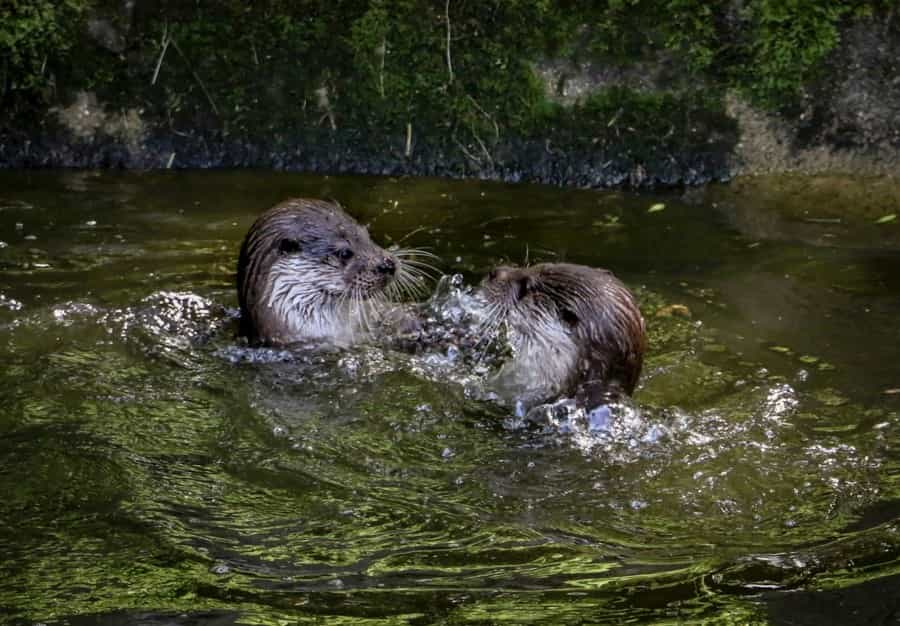
Best places for wildlife watching
Here is Pitchup’s list of six favourite places to catch sight of wildlife on Dartmoor. Don’t forget that wildlife sightings vary according to season and weather conditions. If you’re not sure what you should be looking out for, the national park’s visitor centres have informative guidance on what you can expect at different times of the year.
Bellever Forest
Known for the richness of its wildlife, Bellever Forest near Postbridge has its origins in ancient woodland with the East Dart River running through it. Today this mixed woodland is sustainably managed and is home to roe deer, woodland birds and birds of prey as well as rare fritillary butterflies. You’ll often find Dartmoor ponies grazing among the trees or along the river banks too.
Burrator Reservoir
Surrounded by deciduous woodland, Burrator Reservoir plays host to a myriad of goosanders and dippers as well as cuckoos, nightjars and sparrowhawks among the trees. You can fish for brown and rainbow trout in the reservoir (please buy a permit for coarse fishing).
Fingle Woods
The Teign Valley’s Fingle Woods provides a safe environment for a variety of breeding birds such as kingfishers, woodpeckers, goldcrests and thrushes. If you go quietly about your explorations among the trees, you might also spot fallow deer and fritillary butterflies. Otters can be occasionally seen in the River Teign.
Haytor Rocks
Instantly recognisable as one of Dartmoor’s landmark tors, Haytor Rocks makes a wonderful picnic spot thanks to its far-reaching views over open moorland. Birders can often spot Dartford warblers, meadow pipits and skylarks skimming over the heath, and there are rich pickings here for buzzards and coal-black ravens.
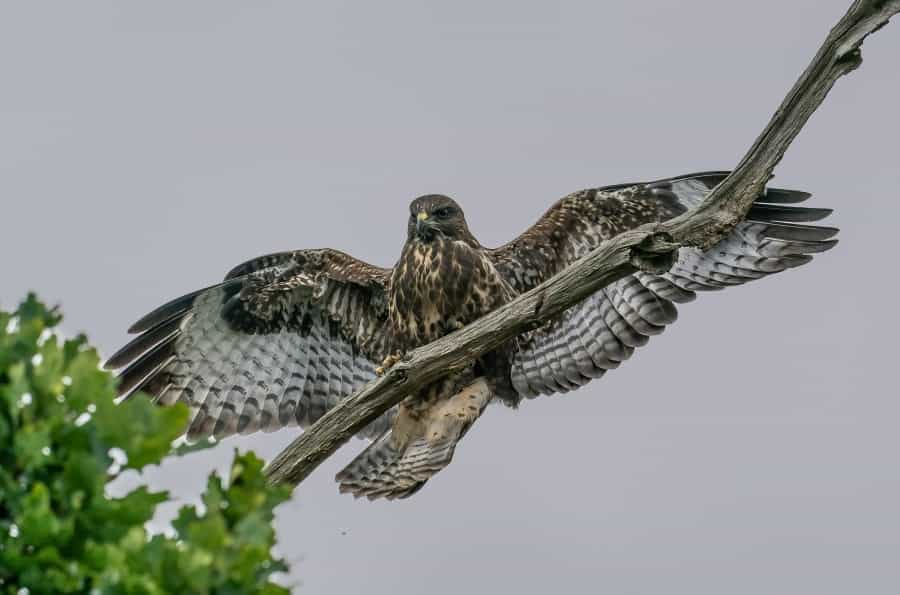
Meldon Reservoir
Herons are often stalking in the shallows at Meldon Reservoir, possibly looking for supper in the form of dragonflies and damselflies. The reservoir is well stocked with brown trout (anglers will need a permit) and there are many waymarked walks in the area; keep an eye open for grass snakes and (rarely) adders as you stroll.
Wistman’s Wood
This centuries-old woodland is as spectacular as it is fragile, packed with ancient oaks swathed in lichen and moss. Flycatchers and redstarts are often seen among the trees, along with occasional sightings of short-eared owls. The walk to the wood starts at the car park opposite the Two Bridges Hotel and takes about an hour there and back through the West Dart Valley. Expect to see Dartmoor ponies en route.
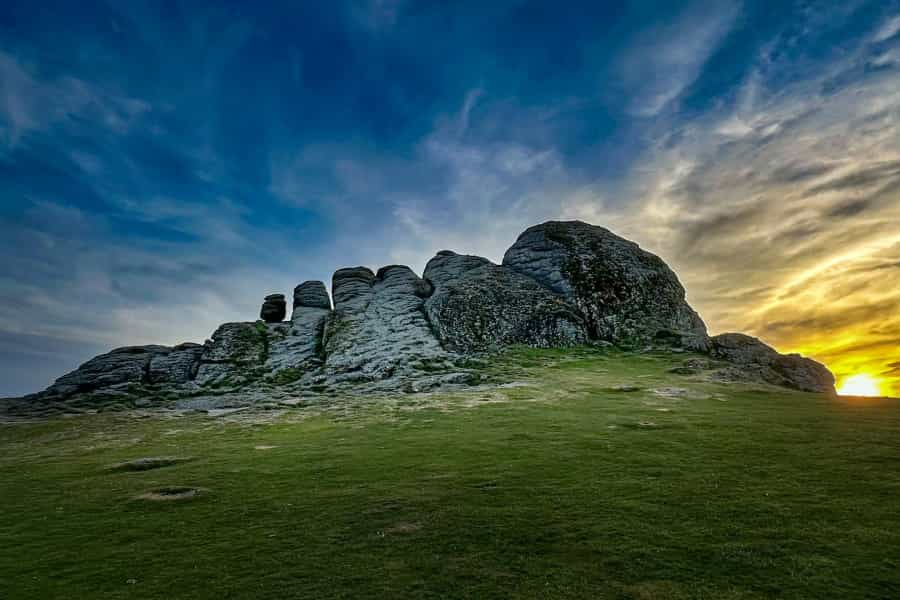
Conservation efforts and visitor impact
The green heart of Devon, Dartmoor has an incredible diversity of wildlife and habitats, much of it rare and protected. Help it stay that way by disturbing the indigenous animals as little as possible, and always ensure your adventures have minimal impact on this fragile environment.
Tips for responsible wildlife watching
As part of the stewardship of Dartmoor, visitors have a responsibility to preserve and protect its ecology and wildlife habitats. To keep you and the animals safe, always follow the Ranger Code when you’re embarking on an adventure in the park:
-
Don’t feed or touch the wildlife – not even the cute-looking ponies (don't forget, they are still wild animals)
-
Never approach a young animal or its mother, especially ponies – one end bites, the other kicks
-
Watch out for ground-nesting birds; if you disturb them between March and July, they may abandon their nest and any young will die
-
Take all your litter home with you
-
Don’t pick wildflowers, take stones or break branches – in short, leave no trace of your presence
-
Use a designated campsite or check where you can wild camp. Don’t start a fire unless you are specifically allowed to do so
-
Keep dogs away from wildlife completely or ensure that they are on short leads
-
Stick to designated viewing areas like hides or platforms
-
Do not wander off marked trails/pathways
-
Drive carefully on the roads and bridleways; you share them with the wildlife
-
Always report an injured animal, uncontrolled dogs or sheep attacks to the Livestock Protection officer: 07873 587561
-
If possible, join a guided tour with a local expert to maximise your chances of seeing wildlife
Specialist equipment
As an amateur wildlife watcher, you don’t need any special gear beyond a pair of binoculars and perhaps a camera with a long-range lens if you’re keen to get some spectacular snaps.
Navigating the moor safely
If you do set out on your own (rather than as part of a guided tour) just be aware that on Dartmoor, the weather can change very quickly indeed, so wear waterproof clothing and sturdy footwear. Take hats, gloves and spare layers in case of downpours, as well as hot drinks and energy-giving food supplies.
Pack map and compass so you can work out where you are if visibility decreases, and carry a whistle and torch. Double check that your phone is fully charged too.
Although adder bites are very rare indeed, if you should be bitten by Britain’s only poisonous snake, always seek urgent medical advice.
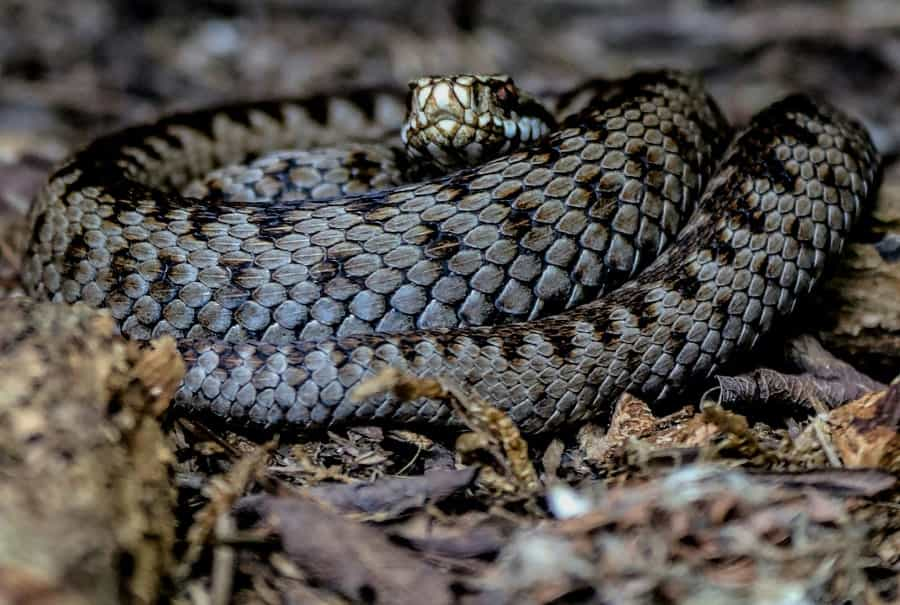
Dartmoor conservation projects
The Dartmoor National Park Authority has a plan in place to secure the future of this fragile environment, and run large-scale projects in conjunction with partners including the Duchy of Cornwall, Butterfly Conservation and Devon Birds; you can support this work and benefit the ecosystem of the park at Donate for Dartmoor.
You can also do your bit to help local conservation efforts maintain the fragile biodiversity of Dartmoor by becoming a volunteer on park projects working with bees, butterflies and otters.
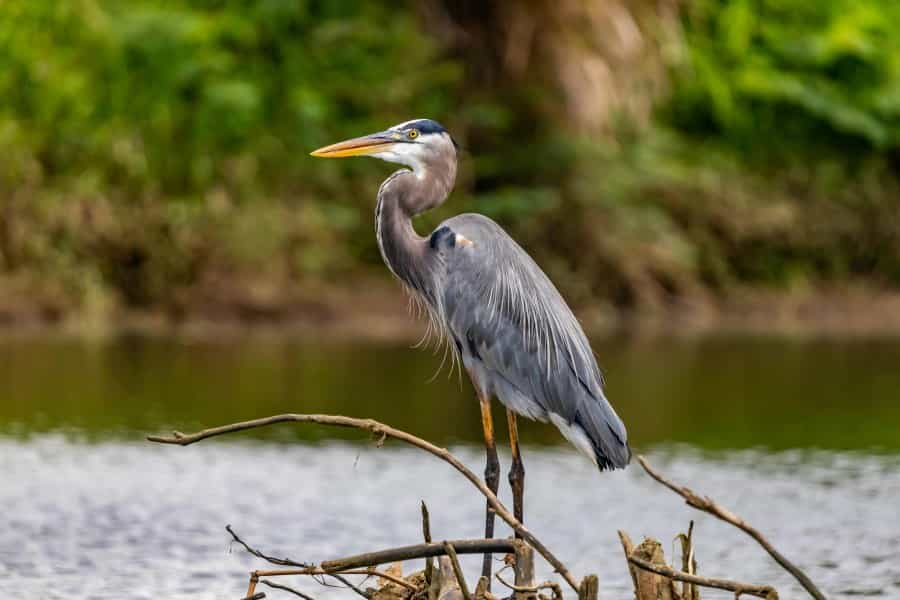
Planning your Dartmoor wildlife trip
When it comes to wildlife watching, Dartmoor National Park is surely one of the best locations in the UK. Whether you choose a family-friendly guided walk, an expert-led birding adventure or jeep safari over morland terrain, the spectacular landscape will never fail to beguile visitors for the opportunity to observe red deer flitting between the trees, wild ponies grazing nonchalantly on the moorland and birds of prey flying high above you in the thermals.
Maximise your time in nature and thus your chances of seeing the rich wildlife of Dartmoor National Park by staying outdoors. Wild/backpack camping is tacitly permitted in some restricted areas of the park without needing prior approval from the landowner, and Pitchup has a number of campsites that are well geared up for families.
As no overnight stays in vehicles, campervans or motorhomes are allowed outside official Dartmoor sites, have a look at our options for tourers.